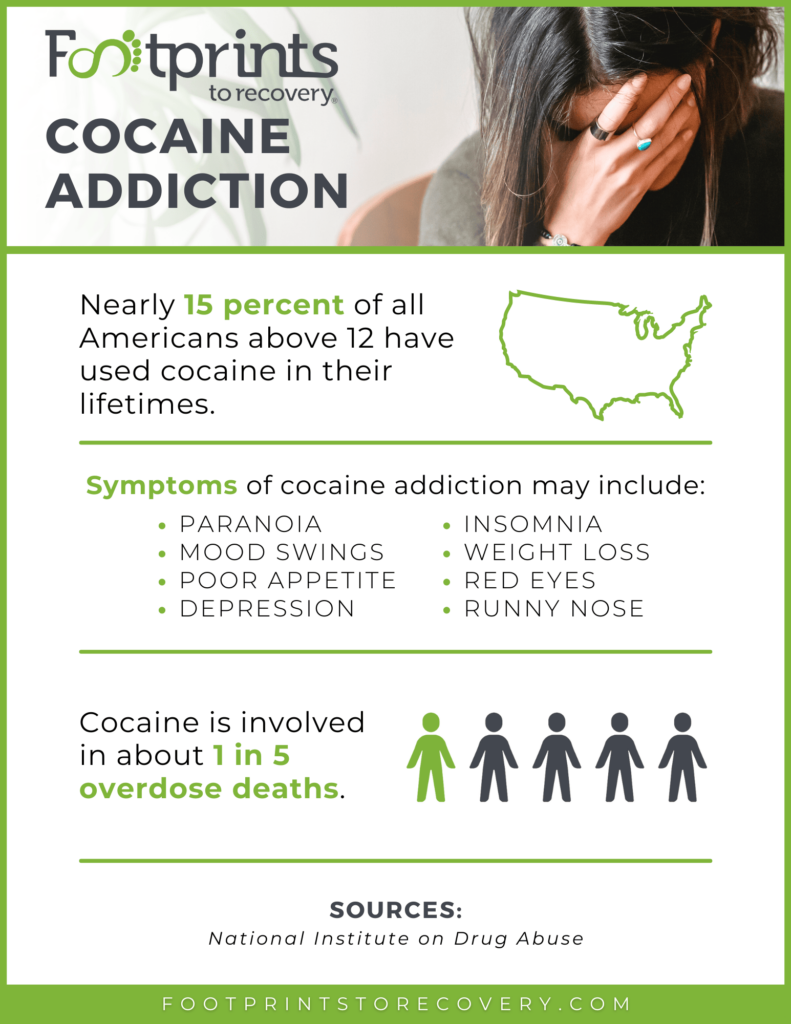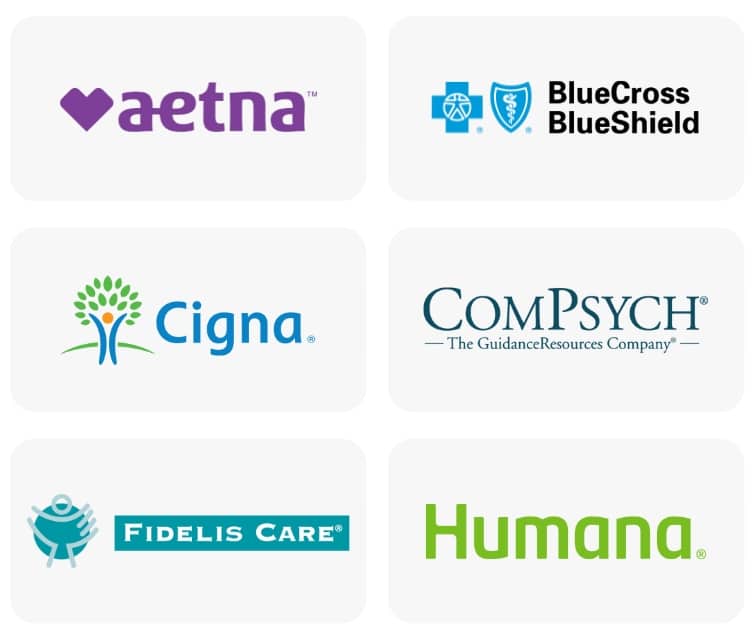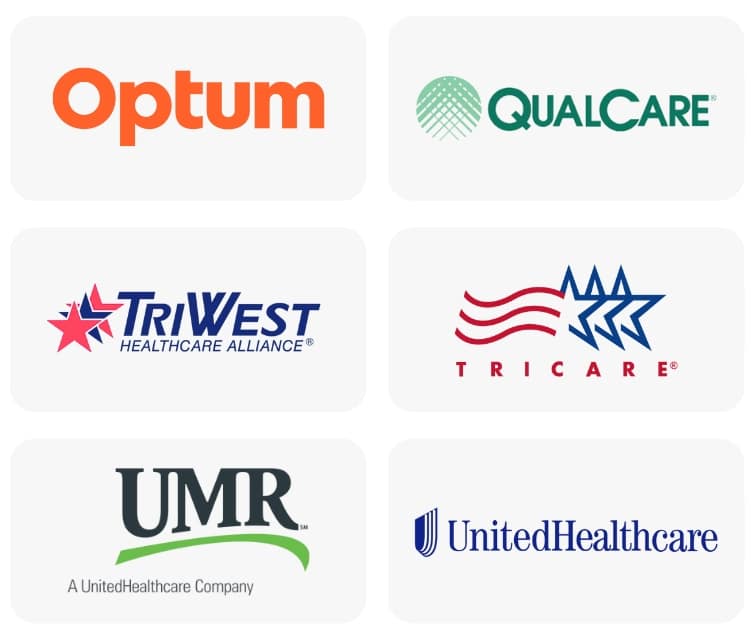Skip To Section
Seeking treatment for cocaine addiction can be a difficult decision, but it’s important to remember that you are not alone in this fight. According to the National Institute on Drug Abuse, about 1.3 million people in the United States struggle with cocaine use disorders. The good news is, there are many effective treatment options available.
The most important thing to remember is that treatment is not a one-size-fits-all process. What is effective for one person may not be for another. But if you are willing to put in the work, recovery is possible.

What Is Cocaine?
Cocaine is a powerful stimulant that is derived from the leaves of the coca plant. Historically, it has been used for both medical and recreational purposes. However, due to its high potential for abuse, cocaine is now illegal in most parts of the world.
When taken orally or snorted, cocaine produces a short-lived but intense feeling of euphoria. It can also lead to increased energy and alertness. But cocaine also has harmful effects, including:
- Increased heart rate
- Higher blood pressure
- Anxiety
- Paranoia
Long-term use can lead to addiction and serious health problems such as heart disease and stroke.
Cocaine is typically used by:
- Snorting it through the nose
- Injecting it intravenously
- Smoking it
Cocaine can also be taken orally, but this method is less common.
What Is Crack Cocaine?
Crack cocaine is a form of cocaine that can be smoked. It is made by processing cocaine with sodium bicarbonate (baking soda) and water. The resulting mixture creates a “crack” sound when heated, hence the name. Crack cocaine first came to prominence in the early 1980s, when it was used as a cheaper alternative to powder cocaine. Crack quickly became popular in poor and minority communities because it was relatively inexpensive and easy to make.
Crack cocaine is also highly addictive, and its effects are much shorter-lived than those of powder cocaine. As a result, people who use crack often find themselves needing to use the drug more frequently to achieve the same high.
Crack cocaine is associated with an increased risk of violent behavior, and, because it is typically smoked, it can damage the lungs.
What Are the Effects of Cocaine Use?
Cocaine can affect people in different ways. It depends on how much and how often you use it. It can make you feel powerful, happy, alert, and energetic, but cocaine it has harmful effects on the body. It can damage blood vessels in the heart and cause heart attacks and strokes. It can also lead to respiratory problems, including pneumonia and tuberculosis.
Cocaine use can lead to a number of effects, both short- and long-term. Short-term effects of cocaine include:
- Increased heart rate
- Dilated pupils
- Talkativeness
- Anxiety and paranoia
- Decreased appetite
- Increased blood pressure
- Dilated pupils
- Nausea
- Vomiting
- Diarrhea
- Muscle spasms
- Seizures
Cocaine use also comes with long-term risks. Some potential long-term effects of cocaine include:
- Cocaine dependence and addiction
- Heart disease
- Cognitive problems
- Damage to nasal passages and lungs
- Stroke or heart attack
- Depression and anxiety
- Paranoia and psychosis
- Disruption to sleep patterns
- Weight gain or loss
- Death (severe cases)
Many of these effects can be extremely harmful, both physically and mentally.
Signs of a Cocaine Overdose
Excessive cocaine use can result in an overdose. Cocaine overdoses can be fatal. Currently, no specific medications reverse these effects. Instead, medical professionals treat an overdose with IV fluids and various medications.
Symptoms of cocaine overdose include:
- Excessively fast or slow heartbeat
- Confusion or psychotic symptoms (hallucinations or delusions)
- Dilated pupils
- Uncoordinated movements
- Seizures
- Dramatic changes in body temperature
Signs someone is overdosing on cocaine may include:
- Dilated pupils
- Rapid breathing
- Nausea and vomiting
- Agitation and irritability
- Chest pain
- Seizures
If someone overdoses on cocaine, the best thing to do is call 911 immediately. Cocaine overdoses can be fatal, so it’s important to get medical help as soon as possible.
Until help arrives, you can try to keep the person calm and awake. You can also try to keep them from choking on their vomit. The sooner you get them medical attention, the better their chances are of surviving.

How Does Cocaine Use Lead to Addiction?
Cocaine is a highly addictive substance that can have profound effects on the brain. These effects are caused by an increased release of the neurotransmitter dopamine. Dopamine is associated with pleasure and reward, so cocaine users may begin chasing the intense high they experienced during initial use.
With continued use, cocaine alters the way the brain processes dopamine, leading to changes in mood, sleep patterns, and appetite. Users may also develop tolerance, meaning they need to take larger and larger doses to get the same high. These changes can lead to compulsive cocaine use and addiction.
Addiction is a chronic disease that affects both the brain and behavior. People who are addicted to cocaine may continue using despite harmful consequences like job loss or relationship problems. They may also feel unable to stop using even though they want to quit.
Signs And Symptoms Of A Cocaine Addiction
There are many signs that may indicate someone is addicted to cocaine. While some of these signs are subtle, others can be quite obvious. If you suspect someone you know is using cocaine, it’s important to be aware of the potential signs of addiction.
Some of the most common signs of cocaine addiction include changes in behavior, mood swings, and financial problems. Additionally, people who are addicted to cocaine may isolate themselves from friends and family members.
The common signs and symptoms of a cocaine problem include:
- Spending excess time obtaining, using, or recovering from cocaine
- Frequently binging on cocaine (taking as much as you can until you run out)
- Continuing to use the drug despite its impact on your relationships, school, or work
- Continuing to use it despite legal or financial problems
- Needing to use more to feel high (This is called developing a tolerance.)
- Lying or downplaying how much cocaine you use to others
- Becoming angry or hostile when others ask you to stop or cut down use
- Experiencing psychological distress (depression, anxiety, irritation) when you stop using
- Withdrawing from friends, family, or other parts of your routine
Symptoms of Cocaine Withdrawal
Cocaine withdrawal and detox should always be done with medical supervision. For anyone who has ever struggled with cocaine addiction, the prospect of withdrawal and detox can be daunting. But it’s important to remember that overcoming a substance use disorder is possible, and there is help available. Detoxification is the process of letting the body rid itself of the drug, and it can be uncomfortable. Medical professionals can ease withdrawal symptoms and keep you safe.
Cocaine withdrawal symptoms may include:
- Anxiety
- Depression
- Fatigue
- Irritability
- Lack of motivation
- Nausea
- Sleep disturbances
- Tremors
Withdrawal and detox are not easy, but they are necessary steps on the road to addiction recovery. With the right support, you can overcome cocaine addiction and start fresh.
"*" indicates required fields
Fill out the form below and one of our admissions team members will reach out to you:
"*" indicates required fields
Timeline of Cocaine Addiction Treatment
Everyone is different, so their recovery timeline is different. Detox is the first step, and it typically lasts a few days. Things that impact that time include:
- The length of time you used cocaine
- The amount of cocaine you took each time
- How frequently you used
- The method by which you used cocaine
- The presence of underlying medical or mental health issues
- If you’re abusing other drugs or alcohol
The first step in treatment is usually detox, which can last for several days to a week. During detox, you will typically experience withdrawal symptoms such as cravings, fatigue, and depression. After detox you will begin therapy, which may last for several weeks to months. Therapy will focus on identifying the underlying causes of addiction and developing coping skills to deal with triggers and cravings. In addition, you will participate in group therapy sessions and may receive medication to help manage your symptoms. After completing treatment, you will need to continue attending support groups and meeting with your therapist on a regular basis to prevent relapse.
Recovery itself is a lengthy process. Many people consider it a lifelong endeavor. That’s why most treatment professionals recommend ongoing therapy, peer support, or groups.
What Crack Cocaine Addiction Treatment Is Like?
Addiction is a disease. That means it’s not a matter of choice or willpower. And it can fundamentally change your brain chemistry, which is why quitting can feel so challenging.
Addiction treatment for cocaine usually involves five steps:
- A thorough assessment
- Medical detox
- Withdrawal management
- Long-term treatment and therapies
- Aftercare
Professional addiction treatment provides a safe and non-judgmental opportunity to quit cocaine and stay sober. The staff at Footprints to Recovery will help you determine the best path for your needs.
Detox for Cocaine Addiction
Many people first check into treatment while still under the influence of cocaine or during acute withdrawal. If this is the case, you will likely need to detox. Detox allows your body to safely eliminate the toxins from your body.
How long cocaine detox lasts and the symptoms you experience depend on various factors, including:
- The frequency and intensity of your cocaine use
- Your history of relapses and treatment
- Co-occurring mental health disorders, like depression or anxiety
- Any medical conditions
- The presence of other substances in your bloodstream
Most detox lasts a few days to a week. During a cocaine binge, people often forgo sleeping and eating, so many clients spend their days in detox resting, eating, and regaining mental strength.
Currently, there are no FDA-approved medications for treating cocaine use. However, many people benefit from medications that treat other issues, like insomnia, depression, or anxiety. Stabilizing those conditions may also decrease your craving for cocaine. For this reason, entering a medical detox for cocaine use can be an important first step in your recovery journey.
What Happens After Cocaine Detox?
Footprints to Recovery provides evidence-based care and individualized treatment plans tailored to your needs and preferences. After completing detox, you can move in to other treatment programs to continue your recovery. Some of the options for cocaine addiction treatment include:
- Inpatient residential treatment for cocaine
- Partial hospitalization program for cocaine
- Intensive outpatient treatment for cocaine
- Outpatient treatment for cocaine
These programs help people in recovery from cocaine addiction and other substance use disorders by providing a safe and supportive environment to learn coping mechanisms, build healthy habits, and work through underlying issues. Our team of dedicated professionals includes therapists, counselors, nurses, and doctors who are all committed to helping you achieve lasting recovery.
Inpatient Treatment for Cocaine Addiction
Inpatient or residential treatment consists of 24/7 monitoring, supervision, and ongoing care. You may benefit from this treatment if you struggle with chronic relapse. Inpatient cocaine treatment is ideal for people who have been struggling with addiction for some time. The length of a residential treatment program, where you live at a rehab center, ranges from about 28 to 90 days.
Partial Hospitalization for Cocaine Addiction
A partial hospitalization program (PHP) includes extensive structure and support for clients who don’t need 24/7 monitoring. You may transition into this level of care after completing an inpatient program. You’ll receive clinical services at a treatment facility throughout the day, but you won’t live there.
Intensive Outpatient Treatment for Cocaine Addiction
As a less structured level of care, intensive outpatient programs (IOPs) are often recommended after clients complete inpatient rehab or partial hospitalization programming. Many clients work or attend school while in IOP. They learn how to integrate their recovery in the real world.
Outpatient Treatment for Cocaine Addiction
As the lowest level of care, outpatient treatment typically involves attending a few hours of therapy each week. Outpatient programs allow individuals to maintain their daily routines and responsibilities such as work or school while receiving treatment. This can be especially helpful if you can’t take time away from your commitments to attend treatment. For this reason, outpatient treatment is best if you suffer from a mild cocaine addiction or after completing higher levels of care once you are ready to reintegrate into your daily routine.

Cocaine Addiction Treatment Services
All treatment methods typically include a combination of group and individual therapies. These therapies support you, teaching you the skills you need to pursue a life without cocaine and offering insight into these areas:
- Self-esteem and self-worth
- Trauma
- Relapse prevention
- Family dynamics
- Life skills (employment, legal issues, housing, etc.)
- Creative expression (writing, music, art)
- Peer support
Addiction is a complex disease that requires comprehensive treatment. While there is no single cure for addiction, various therapies can be used to help people recover.
Common addiction therapies for cocaine abuse include:
- Cognitive behavioral therapy (CBT) is one of the most commonly used therapies in addiction treatment. CBT helps you identify and change unhealthy thoughts and behaviors that contribute to addiction.
- Dialectical behavior therapy (DBT) is another common therapy that focuses on helping you develop healthy coping skills and draws on mindfulness techniques.
- Medication management is sometimes used to treat addiction by helping to manage withdrawal symptoms and cravings as well as treat co-occurring disorders like anxiety, depression, and bipolar disorder.
- Art therapy, adventure therapy, and other alternative therapies can also be helpful in addiction treatment by providing alternative outlets for expression and healing.
- EMDR (eye movement desensitization and reprocessing) is a type of therapy that is used to treat trauma. EMDR is an effective treatment for addiction because it helps to address the underlying causes of substance abuse, which often includes trauma.
Addiction therapy for cocaine can help individuals understand their triggers and develop coping strategies to prevent relapse. Ultimately, the best approach to treating addiction is tailored to the individual’s unique needs and preferences.
What Happens When I Leave Cocaine Rehab?
Addiction recovery doesn’t end once formal treatment is over. Aftercare, like 12-step groups and alumni programs, can help you avoid relapse. You need to practice coping skills to ensure a drug-free life.
You can also join a sober living program where you live in a drug-free environment and continue to attend outpatient therapy sessions. Sober homes are beneficial for those who want access to 24/7 community support as they transition back into their regular lives.
At Footprints to Recovery, we encourage you to take a curious approach to your recovery. That means having the willingness to learn new things. We’re here for you every step of the way!
Does Insurance Cover Drug Rehab for Cocaine?
Cocaine addiction treatment is an important investment in your future. However, insurance coverage for addiction treatment can be confusing and frustrating.
At Footprints to Recovery, we accept most insurance plans, and we’ll work with your insurance to ensure the best coverage possible. You can get started on insurance verification through our secure, online form.
Don’t hesitate to reach out to us with any questions you have about payment or insurance coverage. We’re here to help you get the treatment you need to begin building a better tomorrow!
We Can Help You Beat Cocaine Addiction
Cocaine recovery is possible. At Footprints to Recovery, we’re ready to support you or your loved one. We feel passionate about recovery, and we’re here from detox to when you leave us and beyond. Contact Footprints to Recovery today to take the next step in building your new life.
Our admissions team is available 24/7 to listen to your story and help you get started with the next steps.









